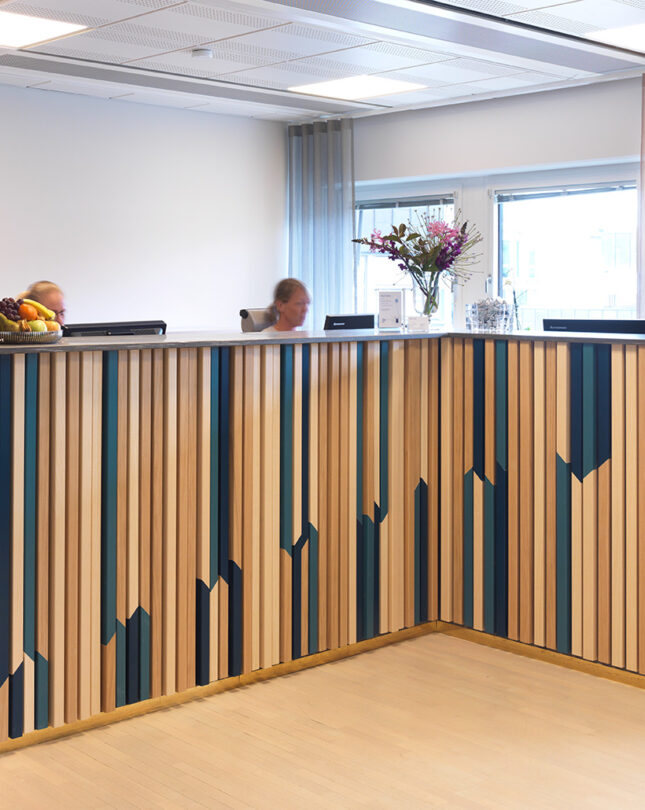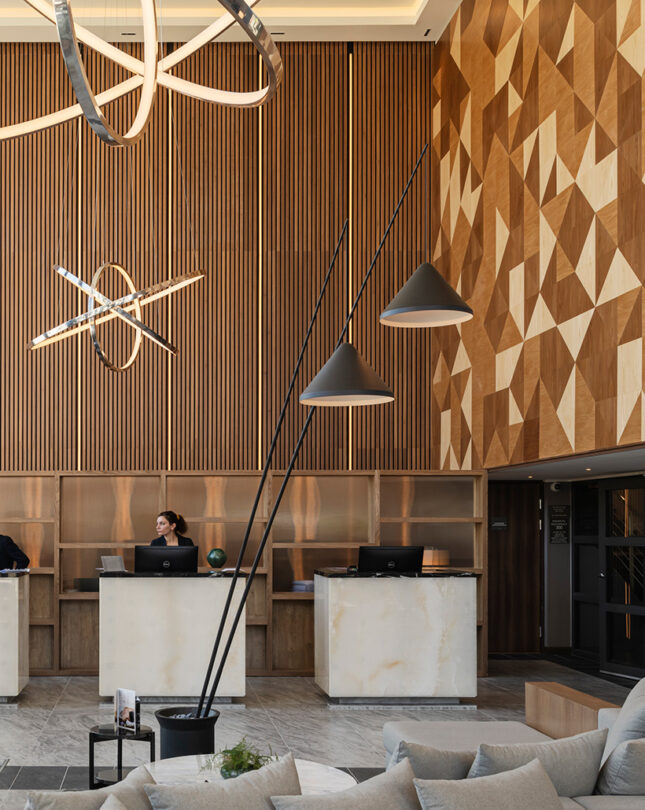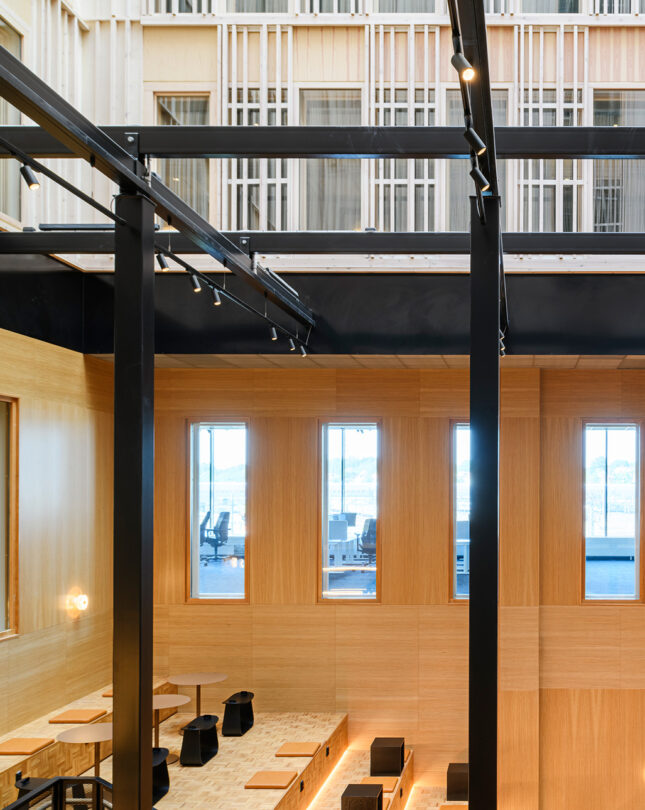Our latest news and views English
Underpinned by our Scandinavian design heritage, we bring you regular stories about architecture and interiors, exploring natural materials, acoustics, and the creation of safe and harmonious environments.
Wood species can vary vastly in terms of colour and grain; giving each type of wood its own unique visual appearance. Using two or more species together is an effective, creative way architects and designers can achieve interesting effects in interiors.
From the lightest blonde to the warmest dark timber, there’s a spectrum of shades to choose from when it comes to wood. And that’s not to mention the different wood grains, as well as the patterns possible with wood panels.

For the offices of law firm Bird & Bird on Norrlandsgatan in Stockholm, the design brief concerned a migration from traditional cellular working to open plan, with a focus on social spaces and collaboration.
Architects Kjellander Sjöberg responded by offering office workers a range of flexible work settings; from studio seating to quiet rooms, and a large terrace.
This workspace also features slatted timber panels with ribs produced in both ash and oak veneers, mixed in with coloured panels for a professional, vibrant finish.
Photo: Erik Wik
AC By Marriott is the design-led hotel brand of the global hospitality group. At its Stockholm location, architects Living Design has used clean lines and well-proportioned spaces to create a harmonious hotel setting.
The colour palette has a strong focus on walnut with the wall above the entrance to the lifts featuring walnut, oak and ash veneers, formed into distinctive triangular panels.
The walnut veneer makes a reappearance on the wall above the reception and is cleverly integrated with the lighting for a seamless, contemporary wood finish, creating an inspiring social hub from day to night.
Photo: Devis Bionaz


Scandinavia’s first zero-energy hotel is operated by Nordic Choice Hotel and is designed by the region’s largest architectural practice White Arkitekter. Sustainable features include the 2,500 square metres of solar cells on the facade and roof, which contribute not only to the building’s own electricity supply but produce more than the property will consume.
The large atrium, spanning 11 floors, features Gustafs panels, chosen for their ability to store thermal energy as well as their aesthetic appeal. The lower part of the atrium features oak veneer with the upper part extending up to the glass roof in white pigmented pine. Both types of veneer are FSC-certified.
Raimo Joss of White Arkitekter in an interview describes the choice of materials, “Not only is wood a sustainable choice, but has well-documented properties for wellbeing.”
Photo: Devis Bionaz
From sleek workspaces to vibrant hospitality environments, mixes of species of wood can achieve a variety of different looks within interiors, often with impressive sustainability credentials to match.